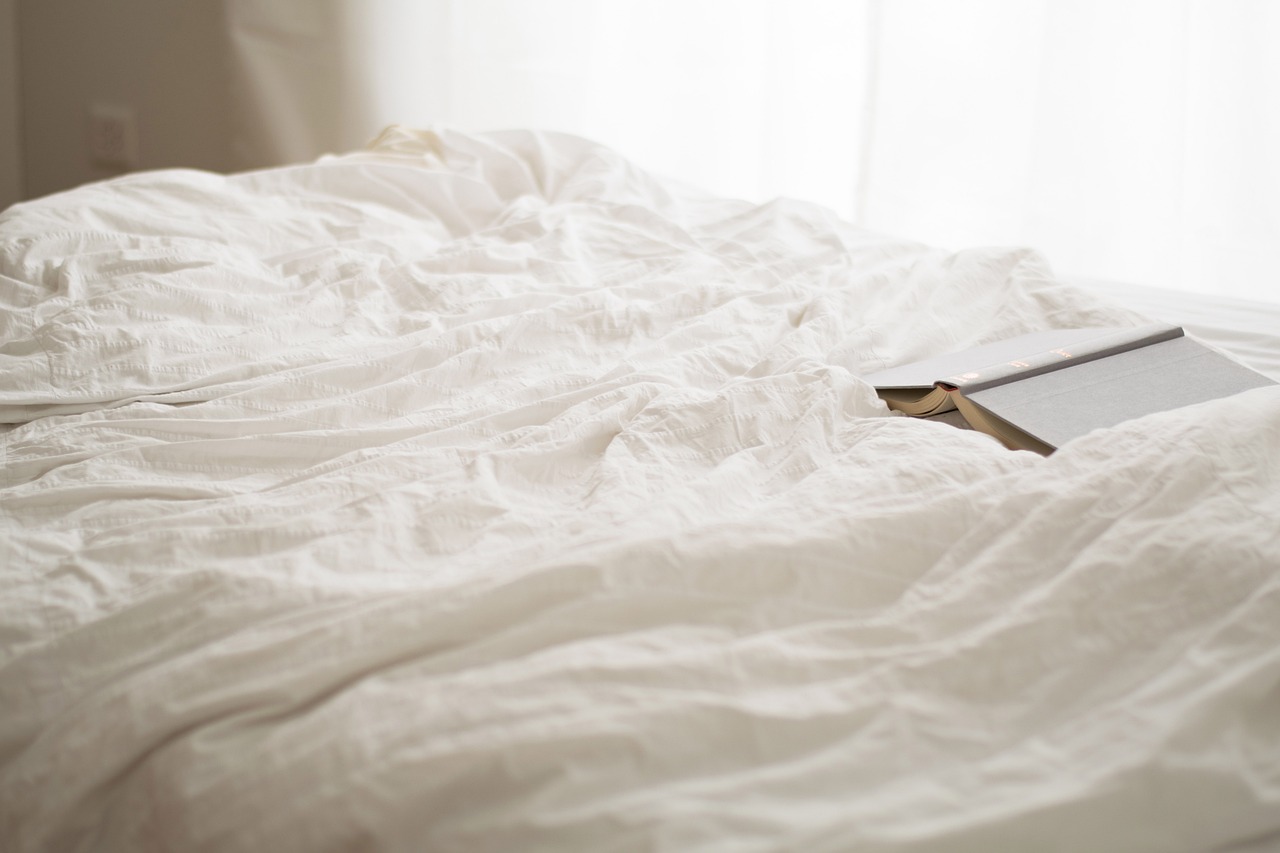Do you wake up in the middle of the night with itchy bites on your skin? Are you constantly finding small blood stains or dark spots on your sheets? It’s possible that you have a bed bug infestation.
Understanding the nighttime activity of these pests is crucial in preventing and controlling their presence in your home. During the night, bed bugs become active and seek out their favorite meal – human blood. They are attracted to body heat and carbon dioxide, which are emitted by sleeping individuals. These tiny pests crawl out of their hiding spots, usually in cracks and crevices near the bed, and feed on their unsuspecting victims. Their bites can cause itching, redness, and even allergic reactions in some people.
Identifying signs of a bed bug infestation is essential for early detection and treatment. Look out for small, reddish-brown insects, shed skins, and tiny black fecal spots on your bedding or furniture.
Preventing bed bug infestations involves maintaining a clean and clutter-free sleeping area, regularly washing and drying bedding at high temperatures, and inspecting second-hand furniture or luggage before bringing them into your home.
If you already have a bed bug infestation, there are DIY methods you can try, such as vacuuming, steam cleaning, and using mattress encasements. However, for severe infestations, it is recommended to seek professional bed bug extermination services.
By understanding the nighttime activity of bed bugs and implementing preventive measures, you can sleep peacefully, free from these annoying and potentially harmful pests.
Bed Bug Behavior During the Night
During the night, bed bugs cunningly emerge from their hiding spots, ready to inflict their itchy torment upon unsuspecting sleepers.
These blood-sucking insects are nocturnal creatures, specifically adapted to thrive in the darkness. As the sun sets and the room darkens, bed bugs become active, seeking out warm-blooded hosts for their next meal.
Their keen sense of smell allows them to detect the carbon dioxide and body heat emitted by sleeping humans. Once they locate a potential target, bed bugs use their sharp, elongated mouthparts to pierce the skin and feed on the blood.
They are stealthy feeders, injecting a small amount of saliva that contains an anesthetic and anticoagulant to prevent the sleeper from feeling their bite. This ensures that they can feed undisturbed for several minutes, accumulating the sustenance they need to survive and reproduce.
Identifying Signs of Bed Bug Infestation
To identify signs of a bed bug infestation, you should pay attention to three key indicators.
First, bed bug bites are often small, red, and itchy, typically appearing in a line or cluster on exposed areas of the body.
Second, blood stains and fecal matter can be found on bedding, mattresses, and furniture, as bed bugs feed on human blood and leave behind droppings.
Finally, a musty odor may be present in infested areas, as bed bugs release pheromones that contribute to this distinctive smell.
By recognizing these signs, you can take appropriate steps to address a bed bug infestation.
Bed Bug Bites
Imagine waking up in the morning with itchy red welts on your skin, only to realize that you’ve fallen victim to the notorious bed bug bites. These bites are the result of bed bugs feeding on human blood during the night. Bed bugs are nocturnal creatures that are attracted to the warmth and carbon dioxide emitted by sleeping humans. They have specialized mouthparts called stylets, which they use to pierce the skin and inject an anticoagulant to keep the blood flowing while they feed.
The bites typically appear in a line or cluster and can cause intense itching and discomfort. It’s important to note that not everyone reacts to bed bug bites, so some people may not even realize they’ve been bitten until they see the physical signs on their skin. If you suspect a bed bug infestation, it’s crucial to take immediate action to prevent further bites and eliminate these pests from your home.
Blood Stains and Fecal Matter
Blood stains and fecal matter can serve as telltale signs of a bed bug infestation, indicating the presence of these persistent pests. When bed bugs feed on a host, they leave behind small droplets of blood on the bedding or mattress. These stains are typically dark in color and may appear as small dots or smears.
Additionally, bed bugs also excrete fecal matter, which is another key indicator of their activity. The fecal matter is usually dark brown or black in color and may resemble small ink spots on the bedding or furniture.
By identifying these blood stains and fecal matter, you can confirm the presence of bed bugs and take appropriate measures to address the infestation. It’s important to act promptly to prevent further spread and minimize the potential health risks associated with these pests.
Musty Odor
The moment you enter the room, a musty smell hits your nose, filling the air with an unpleasant odor that lingers.
This distinct odor is one of the telltale signs of bed bug activity. Bed bugs release pheromones that give off this musty scent, which is often described as similar to the smell of moldy shoes or wet towels. The odor is a result of the bed bugs’ metabolism and their secretion of volatile compounds. These compounds are released when bed bugs feed on human blood and digest it.
The musty odor can permeate the room, making it easier to detect the presence of bed bugs. However, it’s important to note that not all infestations may have a strong odor, and some individuals may be more sensitive to it than others.
Preventing Bed Bug Infestations
To prevent bed bug infestations, you should regularly inspect your bedding and furniture for any signs of these pests. Start by examining your mattress, particularly the seams, tufts, and folds. Look for any reddish-brown stains, which could indicate bed bug fecal stains.

Additionally, check for shed bed bug skins or small, translucent eggs that may be present in the crevices. It’s important to also inspect your furniture, especially in areas where you spend a significant amount of time, such as couches or armchairs. Pay close attention to any cracks, crevices, or seams as bed bugs are adept at hiding in these areas.
If you notice any signs of bed bugs, take immediate action to prevent further infestation by contacting a professional pest control service. Regular inspections and prompt action can help keep your home bed bug-free.
DIY Bed Bug Control Methods
Check out these easy DIY methods to control and prevent those pesky bed bug infestations! Bed bugs can be a nuisance, but with the right techniques, you can effectively manage them.
One effective method is to vacuum your home thoroughly, paying close attention to cracks, crevices, and dark corners where bed bugs may hide. After vacuuming, immediately empty the bag or canister into a sealed plastic bag and dispose of it outside.
Another method is to wash all bedding, clothing, and curtains in hot water and dry them on the highest heat setting. For items that can’t be washed, such as mattresses or furniture, you can use a steam cleaner to kill bed bugs and their eggs.
Remember to vacuum and steam clean regularly to keep bed bugs at bay.
Professional Bed Bug Extermination Services
When dealing with a bed bug infestation, there are certain instances where it’s necessary to seek professional help. Professional bed bug extermination services offer numerous benefits. They have expertise in identifying and treating infestations, as well as access to specialized equipment and treatments. Additionally, these professionals will conduct follow-up inspections to ensure the infestation has been fully eradicated. They also provide prevention measures to minimize the risk of future infestations.
When to Seek Professional Help
Seeking professional help for a bed bug infestation can provide invaluable expertise and resources to effectively address the nocturnal activity of these pests.
Bed bugs are notorious for their ability to hide in cracks and crevices during the day, making it difficult to locate and eliminate them. Professional exterminators have the knowledge and tools to conduct thorough inspections and identify the extent of the infestation. They can also develop a customized treatment plan based on the specific needs of your home, ensuring maximum effectiveness.
Additionally, professional exterminators have access to powerful insecticides and specialized equipment that can target bed bugs in their hiding places. They can also provide guidance on preventative measures to minimize the risk of future infestations.
Don’t hesitate to seek professional help if you suspect a bed bug problem, as their ability to reproduce rapidly can quickly escalate the situation.
Benefits of Professional Extermination
Hiring a professional exterminator can provide you with expert knowledge and access to specialized equipment, ensuring that every crack and crevice in your home is thoroughly treated and eliminating any hiding spots for those pesky pests.
Professional exterminators have extensive training and experience in dealing with bed bugs, allowing them to accurately assess the extent of the infestation and develop a targeted treatment plan.
They are equipped with advanced tools and pesticides that aren’t available to the general public, enabling them to effectively eliminate bed bugs at all stages of their lifecycle.
Additionally, professional exterminators follow strict safety protocols to protect you and your family from harmful chemicals.
They also provide follow-up visits to ensure the complete eradication of bed bugs.
By opting for professional extermination, you can have peace of mind knowing that the problem will be resolved efficiently and effectively.
Follow-Up Inspections and Prevention Measures
After the professional extermination, it’s crucial to schedule follow-up inspections and take preventive measures to make sure those pesky pests don’t return.
Bed bugs can be resilient and may require additional treatments or monitoring to ensure complete eradication. Follow-up inspections should be conducted by a professional to thoroughly examine the treated areas and identify any signs of bed bug activity. These inspections may involve checking mattresses, furniture, and cracks and crevices where bed bugs can hide.
Additionally, preventive measures should be implemented to minimize the risk of reinfestation. This includes regular vacuuming, washing and drying bedding at high temperatures, sealing cracks and crevices, and using mattress encasements.
By being proactive and diligent in follow-up inspections and prevention measures, you can effectively prevent bed bugs from returning and enjoy a peaceful night’s sleep.
Frequently Asked Questions
How long can bed bugs survive without feeding?
Bed bugs can survive without feeding for several months, but they prefer to feed every 5-10 days. During this time, they remain hidden in cracks and crevices, making it challenging to detect and eliminate them.
Can bed bugs transmit diseases to humans?
No, bed bugs are not known to transmit diseases to humans. While they can cause discomfort and psychological distress, their bites are generally harmless and do not pose a significant health risk.
Do bed bugs only come out at night?
Bed bugs are primarily nocturnal creatures, preferring to come out at night to feed on human blood. However, they can be active during the day if they are hungry or if their environment is dark enough.
How quickly can a bed bug infestation spread?
Bed bug infestations can spread rapidly. A female bed bug can lay 200-500 eggs in her lifetime. These eggs hatch in about 6-10 days, leading to a population explosion. Infestations can quickly go from a few bugs to a full-blown infestation within a few months.
Are there any natural remedies for getting rid of bed bugs?
Unfortunately, there are no natural remedies that have been scientifically proven to effectively eliminate bed bugs. Professional pest control treatments using insecticides are the most reliable method for eradicating an infestation.
Conclusion
In conclusion, understanding the nighttime activity of bed bugs is crucial in combating infestations. By recognizing the signs of their presence, such as bites and blood stains on bedding, one can take necessary preventive measures.
Regularly inspecting and cleaning the sleeping area, as well as sealing cracks and crevices, can help deter these pests. In cases where infestations persist, professional extermination services should be sought.
By implementing these strategies, one can effectively control and eliminate bed bug infestations, ensuring a peaceful and bug-free night’s sleep.










